Keywords
|
| Sinusoidal Pulse Width Modulation (SPWM), Voltage Source Inverter (VSI), Total Harmonic Distortion (THD) |
INTRODUCTION
|
| The carrier-based PWM methods were developed first and were widely used in most applications. One of the earliest modulation signals for carrier-based PWM is sinusoidal PWM (SPWM). The SPWM technique is based on the comparison of a carrier signal and a pure sinusoidal modulation signal. Pulse-width modulation (PWM) is a technique where the duty ratio of a pulsating waveform is controlled by another input waveform. The intersections between the reference waveform and the Carrier waveform give the opening and closing times of the switches. PWM is commonly used in applications like motor speed control, converters, audio amplifiers, etc. The SPWM technique is the easiest modulation scheme to understand and to implement in software or hardware but this technique is unable to fully utilize the DC bus supply voltage available to the voltage source inverter. We are using the internal control of VSI for controlling its output and the same is shown in figure 1. |
DEVELOPMENT OF SINUSOIDAL PWM
|
| The sinusoidal pulse-width modulation (SPWM) technique produces a sinusoidal waveform by filtering an output pulse waveform with varying width. A high switching frequency leads to a better filtered sinusoidal output waveform. The desired output voltage is achieved by varying the frequency and amplitude of a reference or modulating voltage. |
| The variations in the amplitude and frequency of the reference voltage change the pulse-width patterns of the output voltage but keep the sinusoidal modulation. A low-frequency sinusoidal modulating signal is compared with a highfrequency triangular signal, which is called the carrier signal. The switching state is changed when the sine waveform intersects the triangular waveform. The crossing positions determine the variable switching times between states. |
| In three-phase SPWM, a triangular voltage waveform (VT ) is compared with three sinusoidal control voltages (Va, Vb, and Vc), which are 120? out of phase with each other and the relative levels of the waveforms are used to control the switching of the devices in each phase leg of the inverter. |
| SPWM is commonly used in applications like motor speed control, converters, audio amplifiers, etc. |
SIMULATION RESULTS AND DISCUSSION
|
| The performance of proposed VSI is simulated on MATLAB and the simulink model is shown in Fig 3.The main objective of this project is to generate the gate pulses for the thyristors used in the VSI. The gate pulses are generated by the SPWM method. In this method a triangular wave is compared with the three phase sinusoidal wave. When we compare the two waves, three/six outputs are generated which are further used to control the VSI as depicted in Fig 4. The simulated wave form of output voltage and current is shown in Fig.5 and Fig. 6. |
| A. MATLAB Simulation of SPWM |
| Output Voltage, Output Current and Total Harmonic Distortion have taken at 0.85 Power Factor for different load values. |
| B. Output of the Three Phase Sinusoidal PWM |
| C. Output Voltage (Three Phase) |
| D. Output Current (Three Phase) |
| Total Harmonics Distortion for output current ‘Ia’ at different Loads and at different career frequencies is shown in the Fig 7-11 |
| E. THD Output Current at 1 KHz Carrier Frequency (Load=1KW at 0.85 pf) |
| F. THD of Output Current at 3 KHz Carrier Frequency (Load=1KW at 0.85 pf) |
| G. THD of Output Current at 7 KHz Carrier Frequency (Load=1KW at 0.85 pf): |
| H. THD of Output Current at 11 KHz Carrier Frequency (Load=1KW at 0.85 pf) |
| H. THD of Output Current at 13 KHz Carrier Frequency (Load=1KW at 0.85 pf) |
CONCLUSION AND FUTURE WORK
|
A. Conclusion
|
| In this paper, Simulink model for Sinusoidal PWM three-phase VSI has been developed and tested in the MATLAB/Simulink environment for different Loads at different career frequencies. The simulation results are compared and analyzed by plotting the output harmonic spectra of various output Currents, and computing their Total Harmonic Distortion (THD) whosel comparison is shown in Table No. 1.Tthe THD for the output current decreases with increase in the carrier frequency up-to 13 KHz. So it is concluded that this design is well efficient for the carrier frequency in the range of 11-13 KHz. |
B. recommendations for future work
|
| There is couple of interesting topics suggested for future research: |
| ? The Twelve Pulse VSI would be implemented in the Matlab/Simulink. |
| ? Further simulation studies should be performed using Space Vector PWM techniques. |
Tables at a glance
|
 |
| Table 1 |
|
| |
Figures at a glance
|
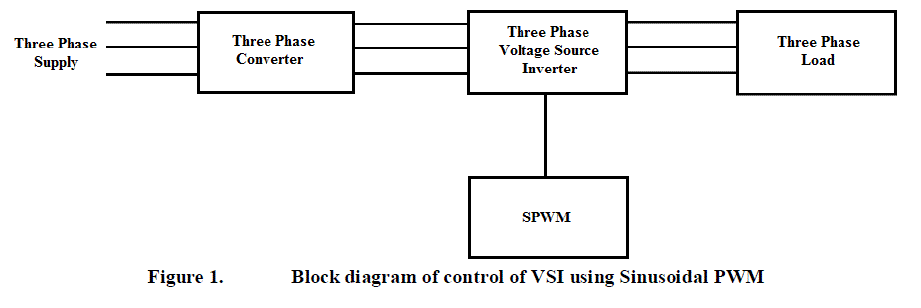 |
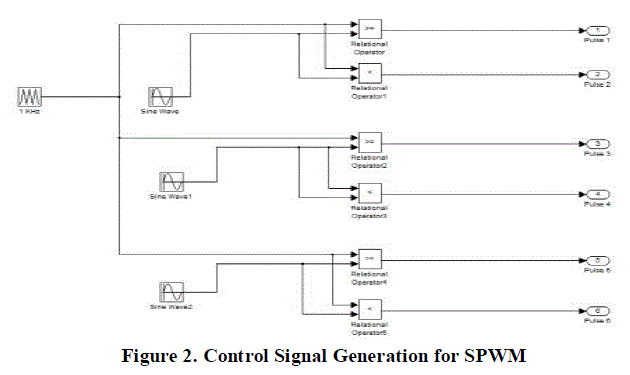 |
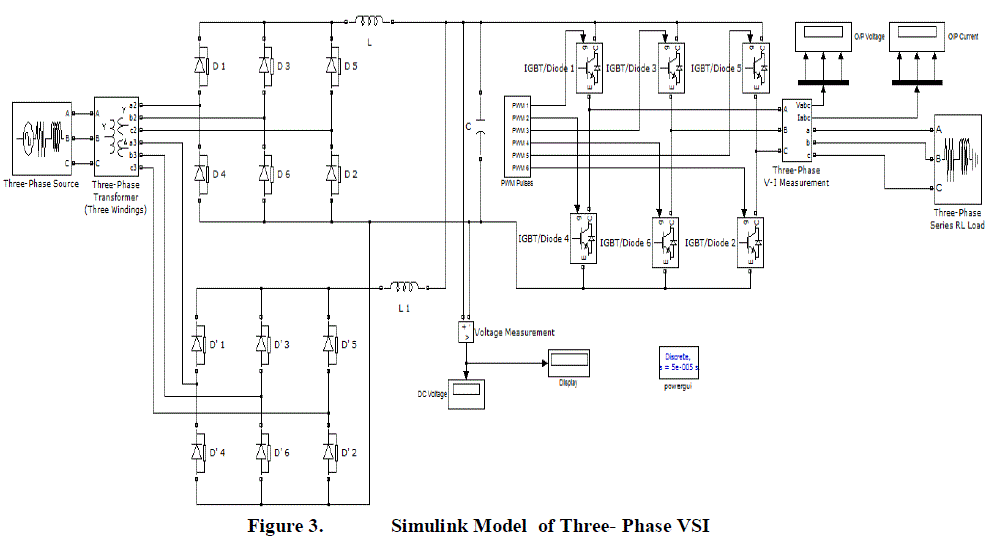 |
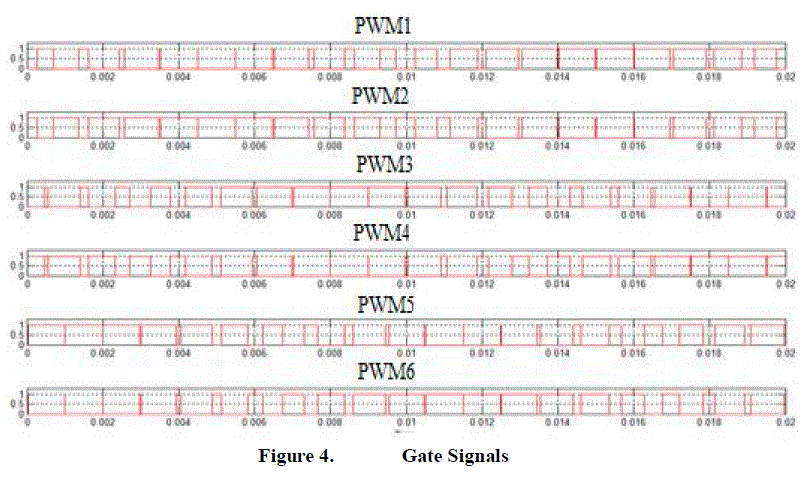 |
| Figure 1 |
Figure 2 |
Figure 3 |
Figure 4 |
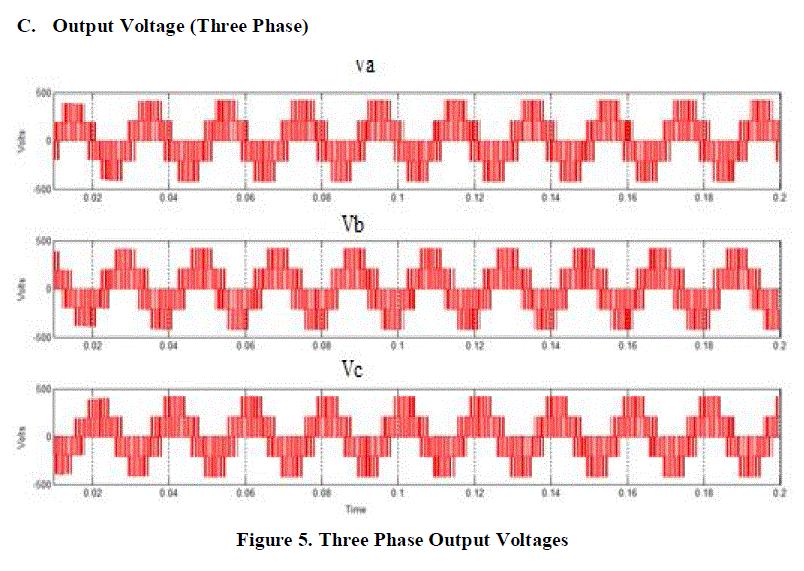 |
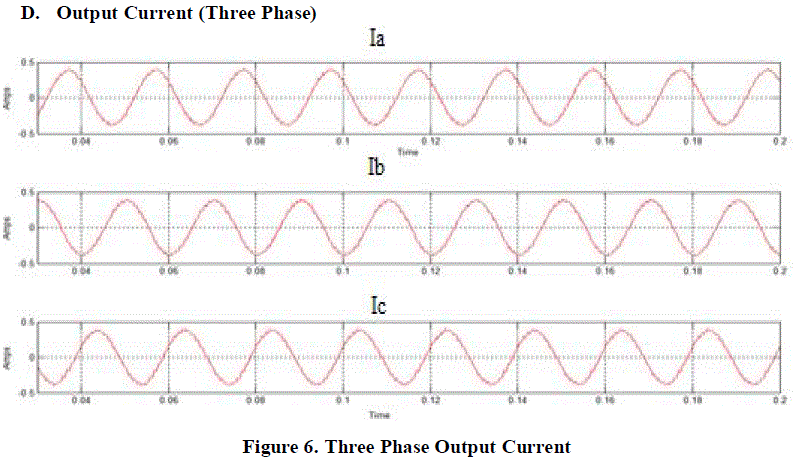 |
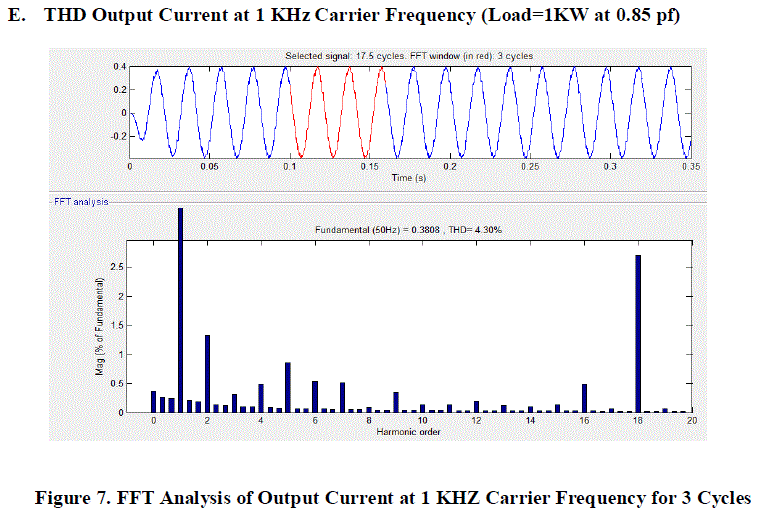 |
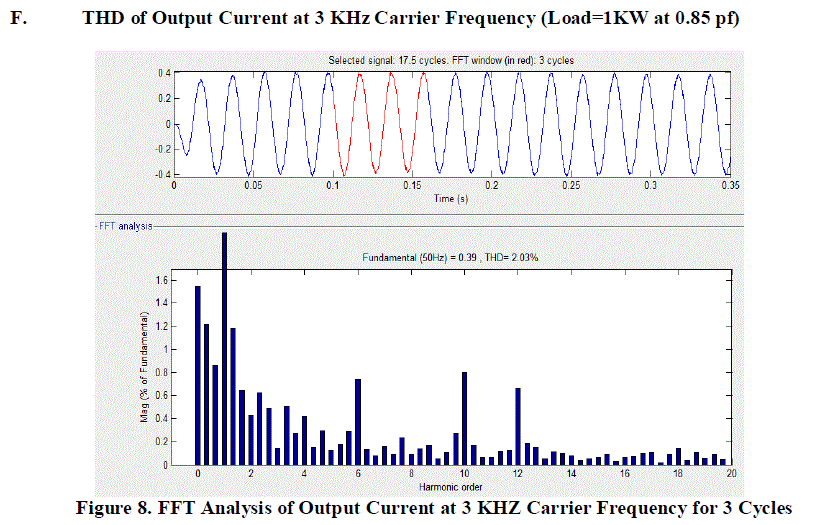 |
| Figure 5 |
Figure 6 |
Figure 7 |
Figure 8 |
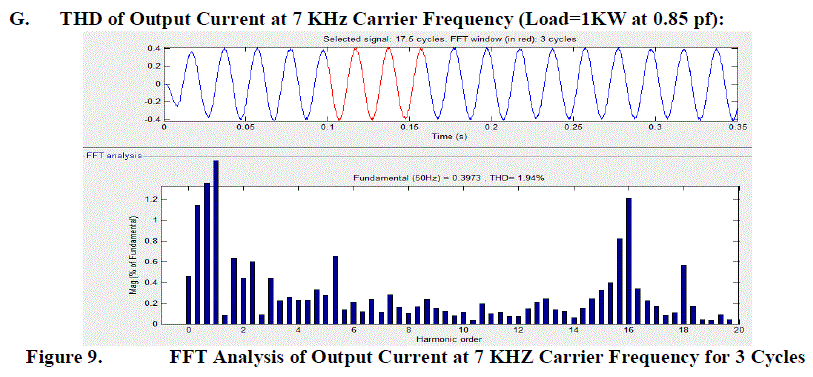 |
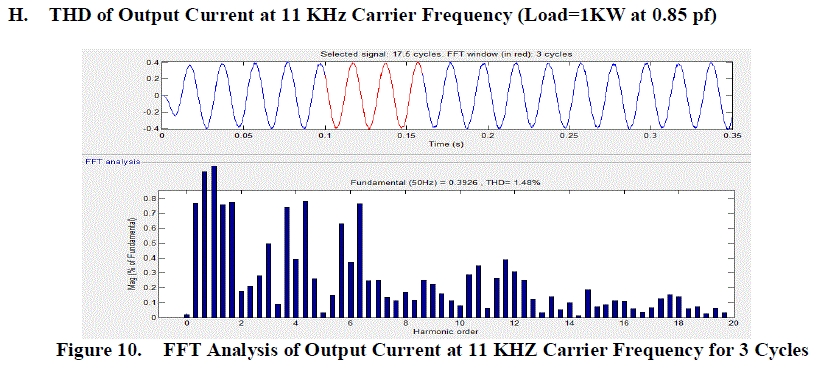 |
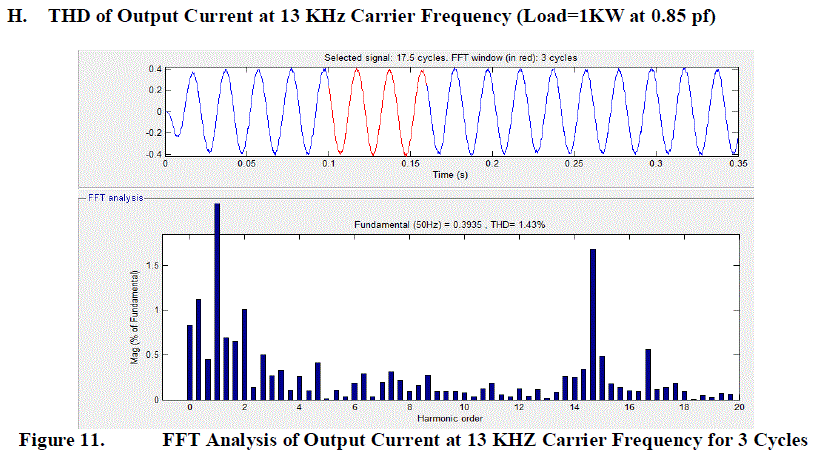 |
| Figure 9 |
Figure 10 |
Figure 11 |
|
| |
References
|
- Sabrije F. Osmanaj and Rexhep A. Selimaj Control of Voltage Source Inverters Using SPWM Strategy for Adjustable Speed Motors, TMT2010, Mediterranean Cruise, 11-18 September 2010.
- J. Holtz 1994 “Pulse width modulation for electronic power conversion”, Proc. IEEE, vol. 82, pp. 1194–1214, Aug. 1994.
- Holmes, G.D. and Lipo, T.A. “Pulse Width Modulation for Power Converters - Principles and Practice, IEEE Press Series on Power Eng., JohnWiley and Sons, Piscataway, NJ, USA, 2003.”
- O. Ogasawara, H. Akagi, and A. Nabel, “A novel PWM scheme of voltage source inverters based on space vector theory,” in Proc. EPEEuropean Conf. Power Electronics and Applications, pp. 1197–1202, 1989.
- K.V. Kumar, P.A. Michael, J.P. John and S.S. Kumar July 2010, “Simulation and Comparison of SPWM and SVPWM control for Three PhaseInverter,” Asian Research Publishing Network, Vol. 5, No. 7, pp. 61-74.
- J. A. Houldsworth and D. A. Grant, “The use of harmonic distortion to increase the output voltage of a three-phase PWM inverter,” IEEETrans. Ind. Applicat., vol. 20, pp. 1224– 1228, Sept./Oct. 1984.
- M. Depenbrock, “Pulsewidth control of a 3-phase inverter with nonsinusoidal phase voltages,” in Proc. IEEE-IAS Int. Semiconductor Power Conversion Conf., Orlando, FL, 1975, pp. 389–398.
- Modern Power Electronics and AC Drives, by Bimal K. Bose. Prentice Hall Publishers, 2001
- Power Electronics by Dr. P.S. Bimbhra. Khanna Publishers, 3rd Edition, New Delhi, 2003.
- A Power Electronics Handbook by M.H. Rashid. Academic Press 2001.
- Math Works, 2010, Sim Power Systems, User’s Guide.
|